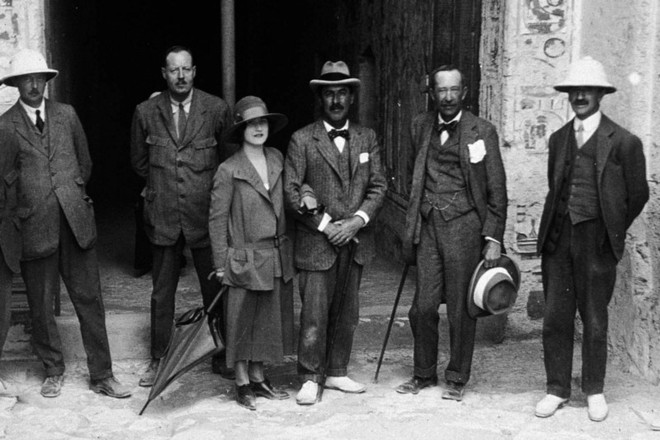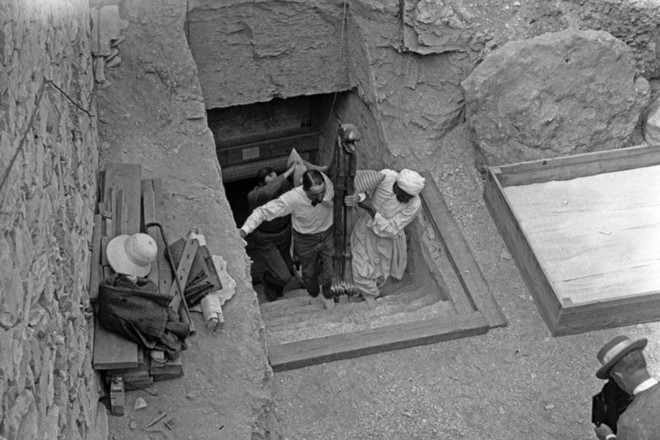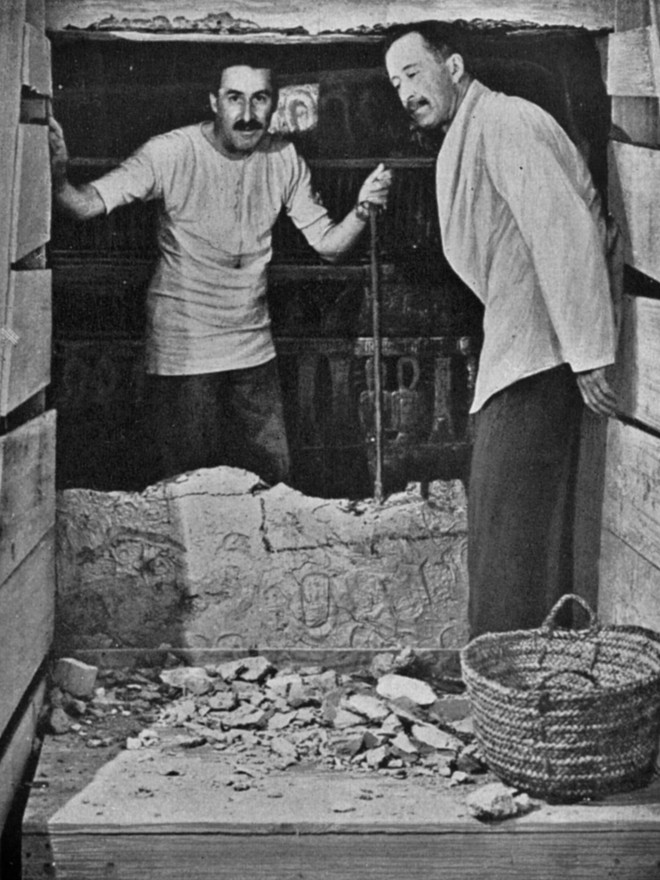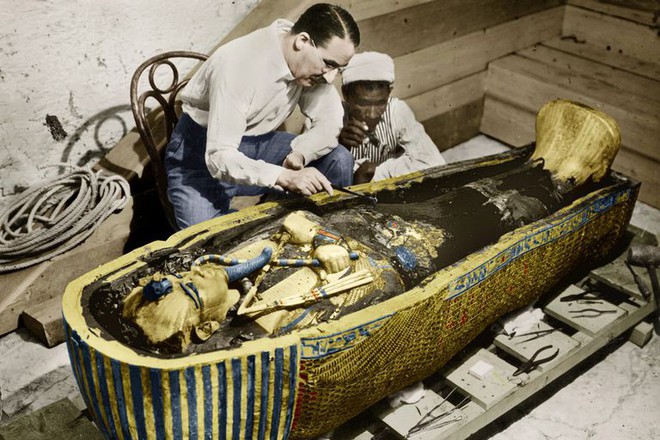In the process of excavating the tomb of Pharaoh Tutankhamun, some archaeologists have taken some actions that are considered “disrespectful” when disturbing the coffin of the youngest king of ancient Egypt. Notably, up to 22 members of the archaeological team have mysteriously passed away and the actual cause is still controversial.
Pharaoh Tutankhamun, also known as King Tut, was the youngest pharaoh in the history of ancient Egypt. Tutankhamun ascended the throne in 1332 BC at the age of nine. His reign is considered to be the golden age, the most brilliant development of all ancient Egyptian dynasties. However, in 1323 BC, King Tut mysteriously died suddenly at the age of 18.
3245 years later, the tomb of pharaoh Tutankhamun was discovered on November 26, 1922 by Howard Carter and his team of archaeologists. The discovery was a breakthrough in the field of archeology, which shocked the world at that time.
However, public opinion also paid special attention to the catastrophic accidents that occurred consecutively with members of the archaeological team, sponsors and people related to them. In 1929, a total of 22 people who participated in the discovery of Tutankhamun’s tomb died within seven years.

King Tut had engraved in his tomb the warning: “Whoever dares to disturb the sleep of the Pharaoh must die.”
Worth mentioning, these cases all died in confusing ways, including murder, suicide and accident. According to Express.com, most deaths are medically explainable. However, about 6/12 people present at the opening ceremony of Tutankhamun’s coffin died mysteriously, still unable to explain,
The first of the group to mysteriously die was George Herbert, 5th Earl of Carnarvon and the financial supporter of the excavation of Tutankhamun’s tomb. Mr. Herbert died on May 4, 1923 after entering the mausoleum, with the cause of death believed to be blood poisoning, the result of a wound infection caused by a mosquito bite.

Some members of the archaeological team
American millionaire George Jay Gould I suddenly developed a fever after a visit to Tutankhamun’s mausoleum in 1923. A few months later, he died of pneumonia.
Archibald Douglas-Reid, the curator of X-rays of the mummy pharaoh Tutankhamun, fell ill shortly after entering the mausoleum and died on January 15, 1924 of a mysterious illness.
Hugh Evelyn-White, an English Egyptologist and one of the first to arrive at Tutankhamun’s tomb, hanged himself in 1924.

The moment the artifacts were brought up from the Tomb of Tutankhamun
More thrilling is the case of Bruce Ingham. He was given a paperweight by Howard Carter, who was the first to open Tutankhamun’s coffin, with what is believed to be a mummy’s hand, with a bracelet that reads: “Cursed is anyone who touches my body.” Some time after receiving the bizarre gift, Ingham’s house burned down in a fire. While rebuilding, the house was again swept by a flood.
All these deaths have fueled speculation, skepticism and fear about the fulfillment of the young Pharaoh’s curse of punishment against those who dare trespass his resting place.

Archaeologist Howard Carter and Count George Herbert at the entrance to King Tutankhamun’s tomb
Died because of ‘blasphemy’ or other causes?
During the decades after the deaths of members of the archaeological team, there have been many theories from the current scientific perspective.
One of the most widely accepted theories is that the cause of the unusual deaths of many people participating in excavations or visiting King Tut’s tomb is infection with bacteria, perennial molds or gases. Toxic in high concentrations in the humid environment of the catacombs.

Archaeologist Howard Carter – who first opened the lid of Tutankhamun’s coffin, did not believe in the curse of the youngest pharaoh of ancient Egypt,
Many studies show that some ancient mummies have molds including at least two extremely poisonous species, Aspergillus Niger and Aspergillus Flavus. They can cause allergic reactions such as congestion or bleeding in the lungs and are especially harmful to people with weakened immune systems.
Some walls in the tomb also have bacteria that attack the respiratory tract such as Pseudomonas or Staphylococcus. The scientists also detected ammonia gas, formaldehyde organic matter and hydrogen sulfide gas in the closed coffin. In strong concentrations, they can cause burning eyes, nose, symptoms of pneumonia. Severe cases can lead to death.
In addition, a discovery in the Egyptian tombs is that a lot of bats live inside. Bat droppings also carry fungi that can cause respiratory illnesses. Under the right conditions, these substances can be deadly.

Ancient mummies have two extremely toxic molds, Aspergillus Niger and Aspergillus Flavus.
However, according to National Geographic, archaeologists rarely wear masks when exploring tombs, even when opening coffins. This may be the reason why many people are infected with diseases that lead to mysterious deaths. Also, cases of suicides or fires believed to be related to the mummy curse could be just a coincidence.
Source: genk.vn








